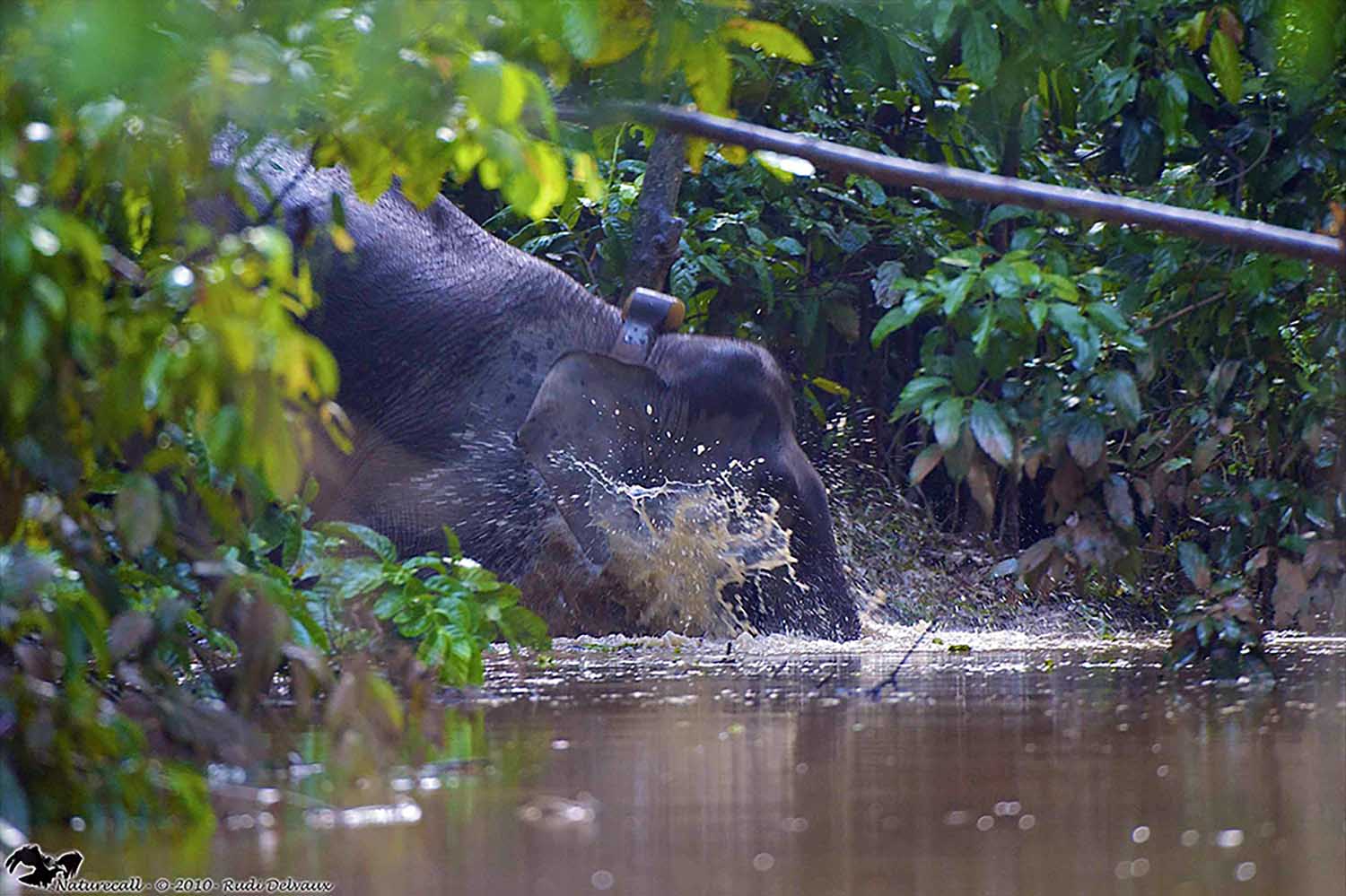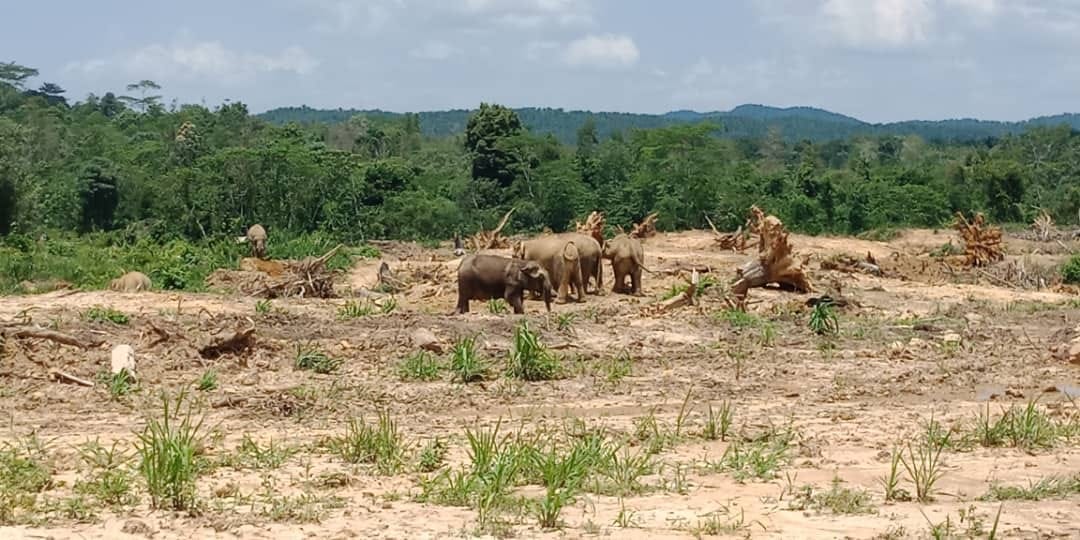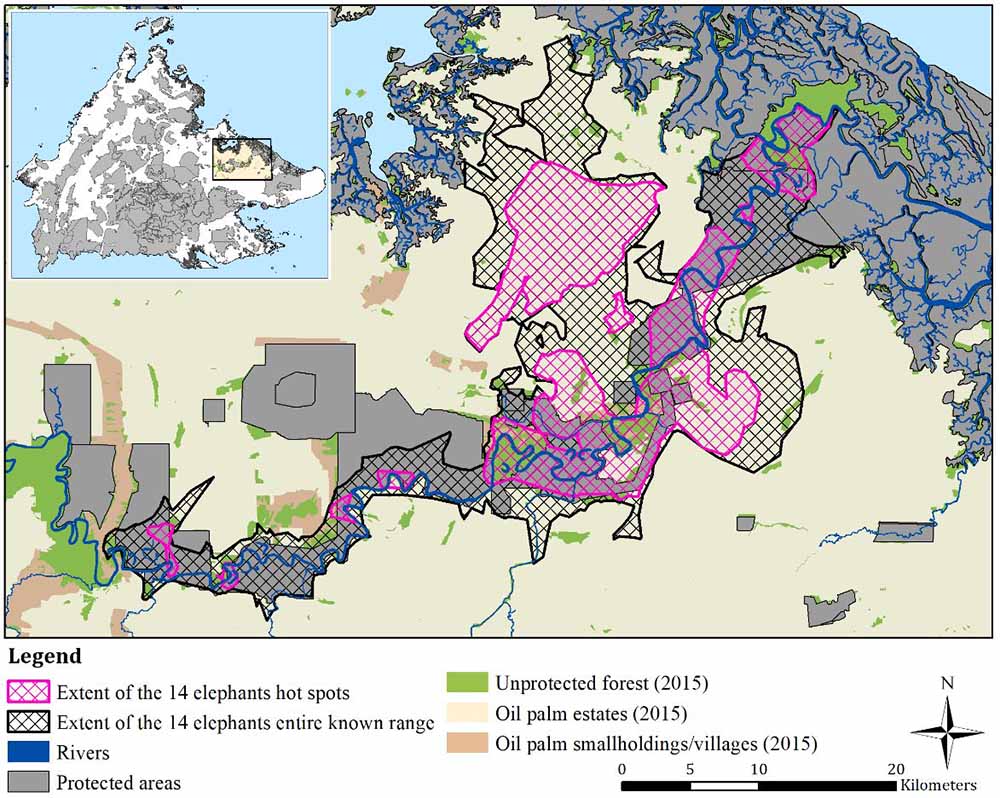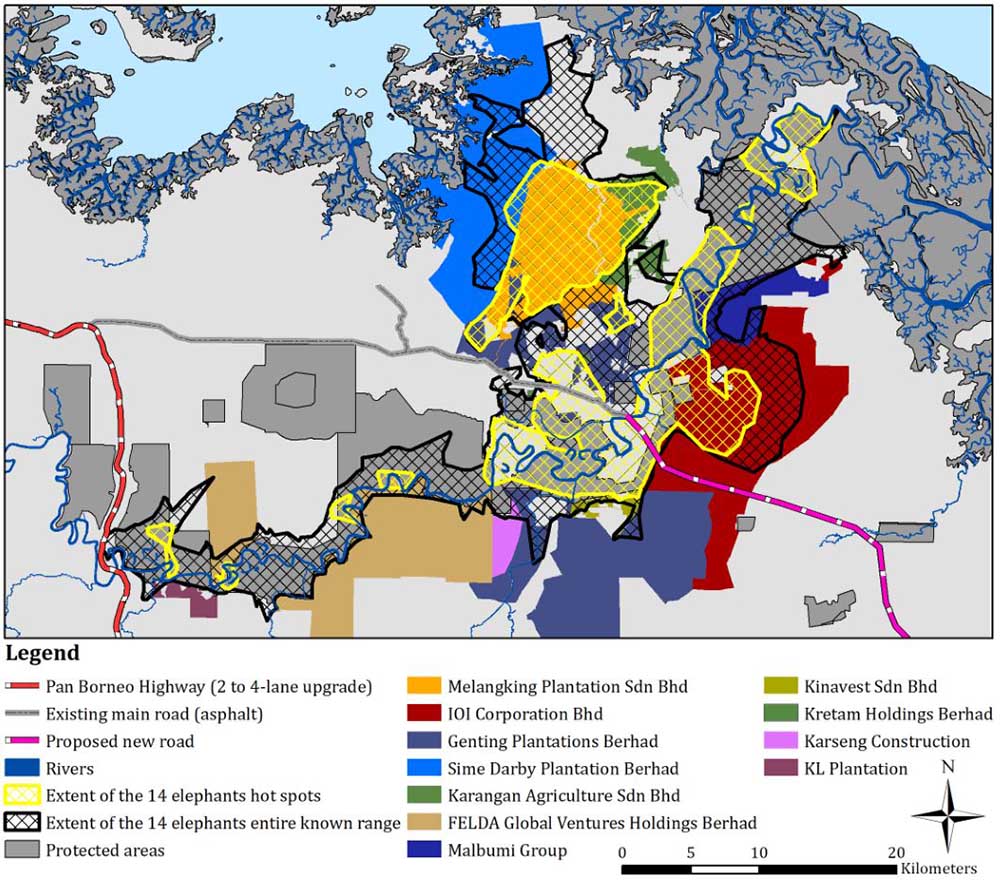Protecting all remaining forests and abandoning the Sukau bridge project crucial for the future of Kinabatangan elephants
Press release from Danau Girang Field Centre, Forever Sabah, HUTAN and Seratu Aatai
1 August 2022, Kinabatangan, Sabah: Protecting all remaining forests and abandoning plans for a public road through the Kinabatangan elephant range is of prime importance if we want to safeguard this highly threatened population. A new study published in the journal Scientific Reports also stresses out that effectively managing areas outside of protected areas is also necessary for the long-term survival of the Kinabatangan elephant population.
In this study, the authors used GPS collared data for 14 elephants and developed land use/land cover data to assess how these elephants use the oil palm dominated landscape in the Kinabatangan floodplain. “With these data, we identified the distribution and hot spots of 11 females and three males living in the Lower Kinabatangan from 2010 to 2020. We also estimated the proportion of time spent within differing land use categories within the elephant’s hot spots and compared this with their known ranges,” explained Dr Nicola Abram, from Forever Sabah. “We also looked at time spent by elephants in different oil palm estates to identify where better management strategies are needed to improve habitat permeability and reduce human-elephant conflicts,” said Abram.
“Moreover, identifying the location of hot spots, or areas most frequented by the elephants, is essential in designing appropriate management practices in collaboration with land users and identifying the best location for elephants corridors; something that all our organisations, HUTAN, Seratu Aatai, Danau Girang Field Centre and Forever Sabah, together with Sabah Wildlife Department and Sabah Forestry Department have been working on for several years,” said Dr Nurzhafarina Othman, Senior Lecturer at Universiti Malaysia Sabah and founder of Seratu Aatai.
In the Lower Kinabatangan, 49 km 2 of unprotected forest being on state land and various land titles are at risk of being converted.
“Protecting these forests is an essential and efficient way to secure key elephant habitat since all collared individuals were using these forest fragments in their entire range. On average, 24% of time was spent in unprotected forests within hot spots. In fact, five females had large proportions of their hot spot extents in unprotected forests, spending substantial periods of their time (33-61%) within these threatened areas,” added Othman. “It is therefore critical for the survival of the elephant population in the Kinabatangan that these unprotected forests are preserved and acquire protection status as soon as possible,” stressed Othman.
“Another significant issue faced by these elephants is the threat from the controversial Sukau bridge and road/highway that is set out in the Sabah Structure Plan, said Professor Benoit Goossens from Cardiff University, and director of Danau Girang Field Centre. “Currently, a new road is under construction on the northern bank of the village of Sukau, and this has already cleared areas of unprotected forest. This public road could link to a potential new bridge that would cross over the Kinabatangan River, cutting through unprotected forest and a protected area (Lot 3 of the Lower Kinabatangan Wildlife Sanctuary), before going through palm oil estates,” added Goossens. “For the Kinabatangan, creating a public highway will cut the elephant population range into two parts. All collared elephants use this area, as it is a key bottleneck and the only alternative option to pass around Sukau village. Our analyses suggest that if the road/highway (and the bridge) goes ahead it will have a significant impact on the elephants’ behaviour. By disturbing their ranging patterns and segmenting the entire elephant range, there will be dire consequences for these animals and their family groups. The existing road in Batu Putih has already proven to be an impassable barrier for this population. It is our hope that this study illustrates the importance of protecting all forested habitats, effectively managing areas outside of protected areas and completely abandoning the plan for a new cross-Kinabatangan bridge
as stated in the recent Cabinet-approved Bornean Elephant Action Plan 2020-2029,” concluded Goossens.
The collaring of the elephants in the Kinabatangan was mainly supported by Houston Zoo, Columbus Zoo and Aquarium, Elephant Family, Mohamed bin Zayed Species Conservation Fund, Ocean Park Conservation Foundation Hong Kong, US Fish and Wildlife Service Asian Elephant Conservation Fund and the Asian Elephant Foundation.

A female elephant with her satellite collar crossing a small river in the Kinabatangan. Fourteen individual elephants that were collared across the Kinabatangan provided high-resolution GPS data for this study. (Courtesy: Rudi Delvaux)

Elephants in an oil palm plantation in the Kinabatangan. On average, the elephants that were collared spent 33% of their time in oil palm estates, with six individuals spending the majority of their time in oil palm estates overall.

Map showing the pooled extents for all 14 elephant individuals for their collective hot spot areas (in pink cross hatch) inside of their collective entire range (in black stripped area) within the Lower Kinabatangan in eastern Sabah. Unprotected forest patches can be seen in green.

Map showing the pooled extents for hot spots (in yellow cross hatch) and entire range (in black cross hatch) within identified oil palm estates within the Lower Kinabatangan. Map also shows the existing Sukau road (in grey) and the planned road/highway that will cut the Kinabatangan elephant population into two that will be disastrous for these elephants.
For more information on this press release, please contact:
Dr Benoit Goossens, Danau Girang Field Centre
Email contact@dgfc.life
